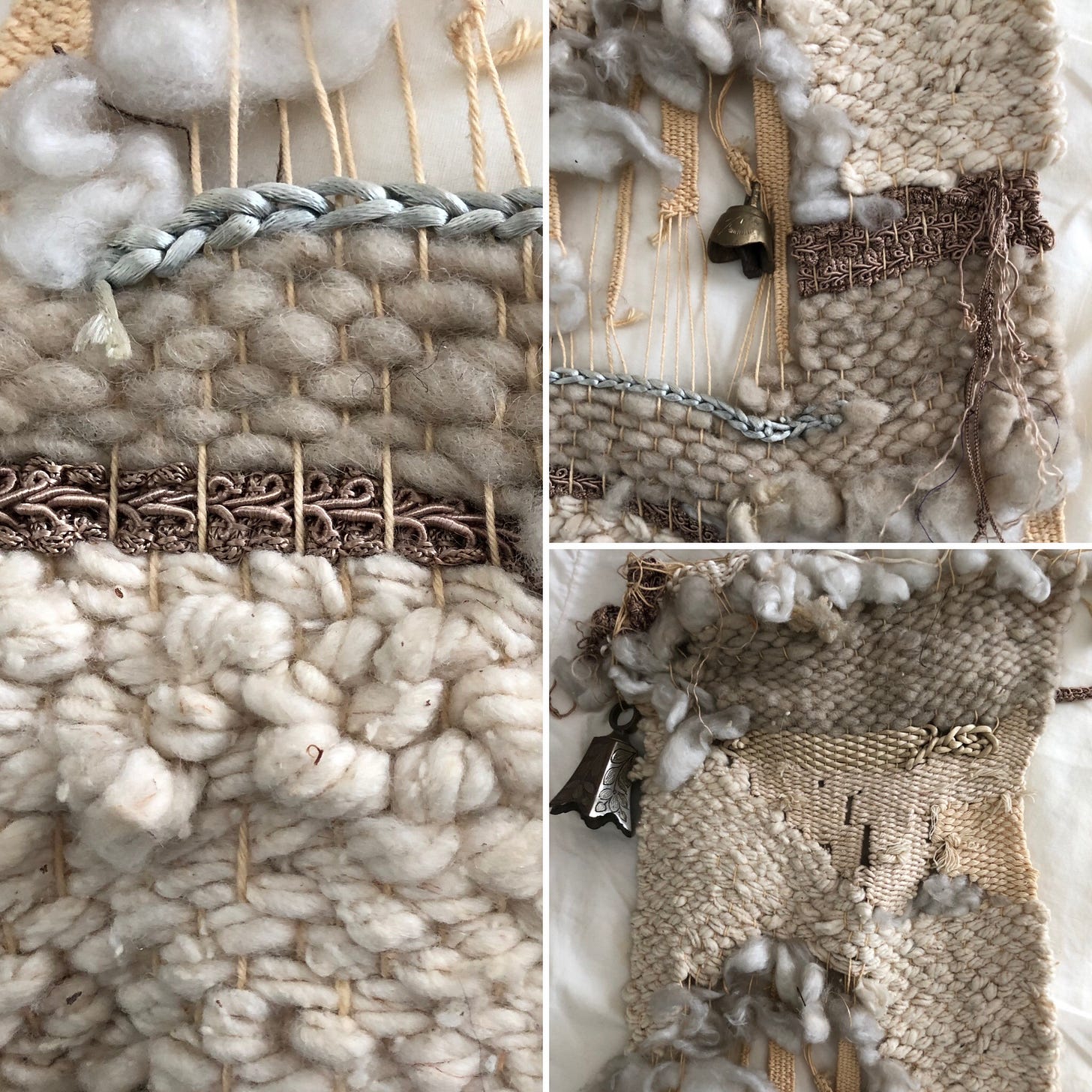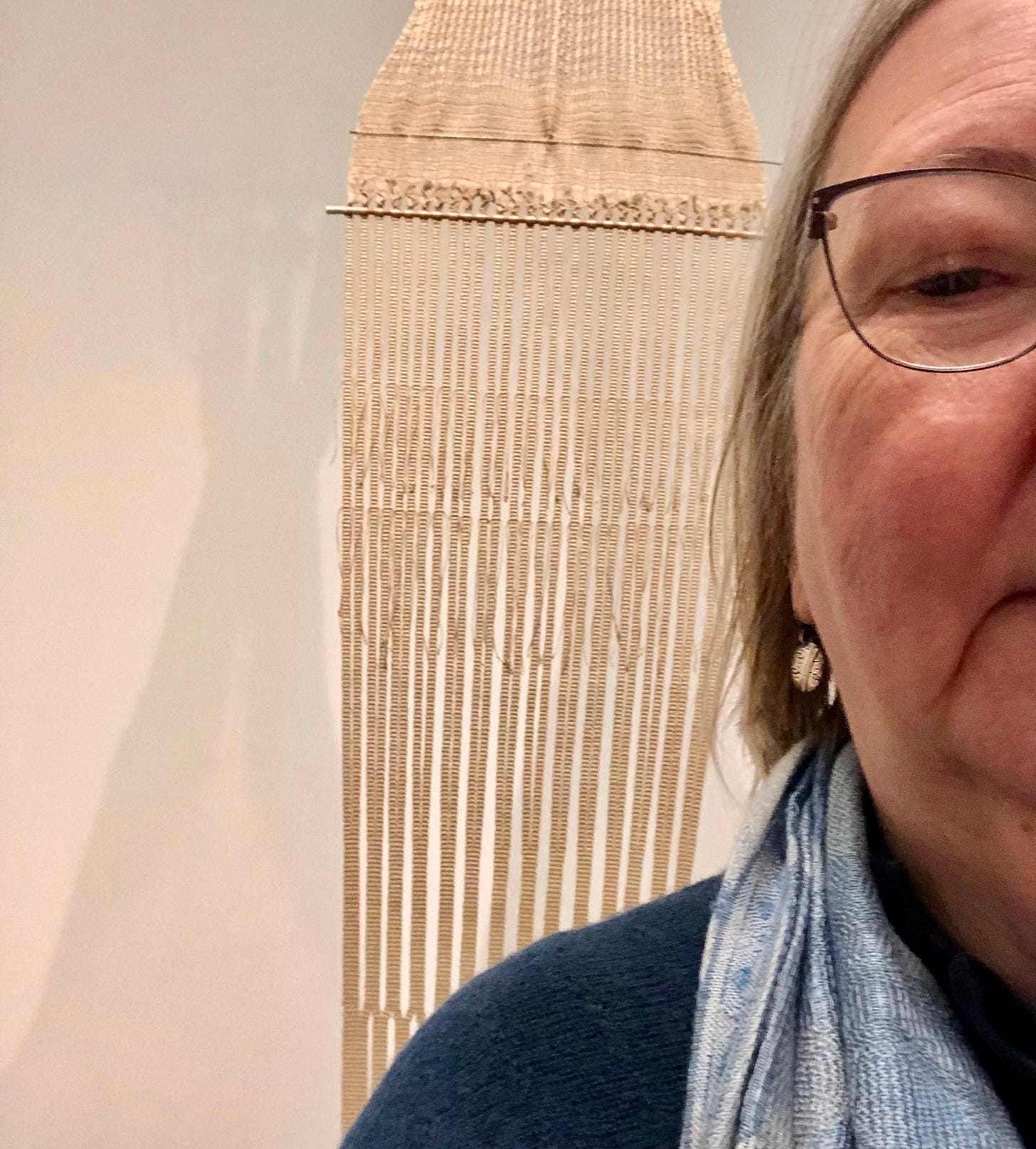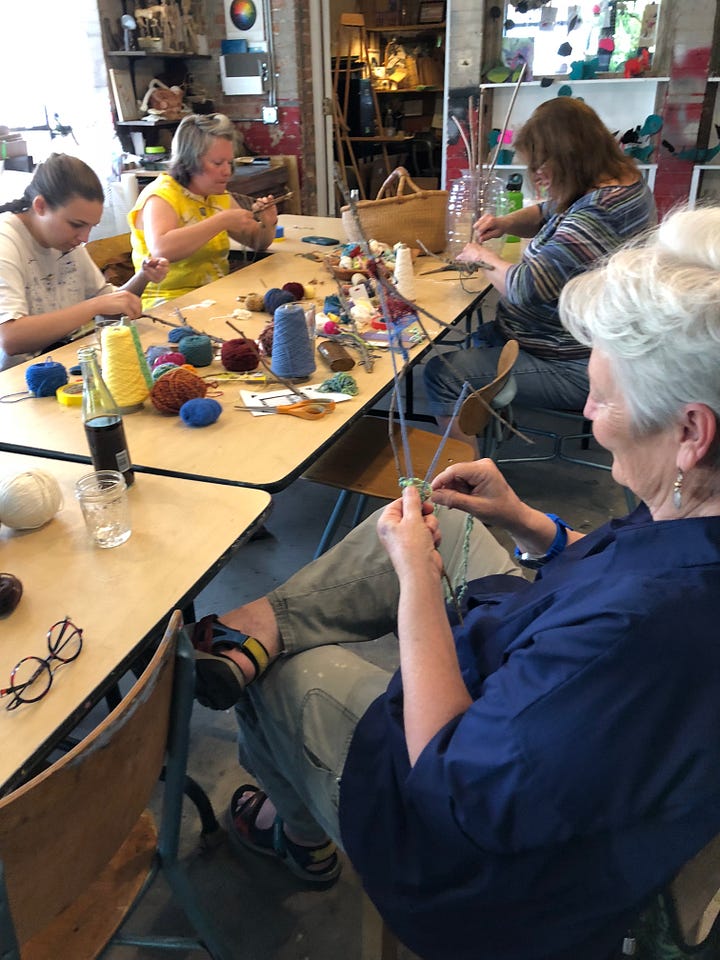What is in a Name?
Writing an Artist's Statement
When I am asked to write about my own art practice, I struggle with the words. The Making is pretty straight forward, I get that part. Preparing the works for display is a challenge, complicated by gravity and the tensile strength of materials but really just a matter of balance. However, writing an artist’s statement and/or a label is hard.
First of all, what do I call the kind of art that I make? I use yarn and thread, but I approach each piece as a sculpture or painting, or maybe even an installation. The roots are in craft but the goal is to challenge the viewer the way any thoughtful work of art should.
I have been avoiding the term Wall Hanging because I associate the term with the Hippy-Macrame Craft Movement of the 1960s and 70s. The term came to be over-used in craft magazines and summer camps.
In my college weaving classes ( this was the late 1970’s) we were taught by a traditional floor-loom weaver, who reluctantly let us try out the tapestry looms. Outside of class time, we dabbled in structures, textures, and forms that felt expressive and interpretive. Our experiments reflected what was happening in the wider art world and intersection between craft and art.

Much to my delight, I recently learned that the term Wall Hangings1 has a concrete place in Art History. Turns out, Wall Hangings was the name of a rather important MOMA show in 1969. Louis Bourgeois was interviewed by Craft Horizon Magazine about this show. When she first heard the exhibition title, the great Surrealist said, she thought of mail sacks hanging from a post office wall, “beautiful in their simplicity and practicality.”2
Her words perfectly describe the vibe of that show, monumental installations made from a wide range of materials, sculpted into challenging and charming objects with presence. A few of those pieces can still be seen in the wild.

So, what about the Hippy- Macrame thing, anyhow?
In the 1950s and 60s textiles became linked with interior design and manufacturing. Art museums hosted textile exhibits sponsored by corporations, focused on functionality of design. In the decade leading up to the 1969 Wall Hangings show, the material limitations of art-making were expanded to include fabric, not only woven but also knotted, interlocked and braided, with monumental results. The authors of the show catalog described this work as having “extended the formal possibilities of fabric, frequently using complex and unusual techniques.”3
In the early 1970s macrame and wall hangings woven with chunky yarn were embraced by craft magazines and art departments through out the US and Europe. They seemed so simple, approachable. The materials became readily available and often associated with rehab or children’s art classes. This avant-garde art movement (like so many before it) found its way into the mainstream.
From the Curators
Many of the wall hangings in this exhibition utilize new and relatively unexplored materials, but the modern weavers —unlike the modern painters and sculptors —shun technological involvement. They experiment with form, they respond to twentieth-century sculptural and graphic influences, but they are largely indifferent to certain recent developments which might supplement hand tools with machine techniques. This has not yet limited their inventiveness; indeed the works they offer here are products of surprising ingenuity.
They reflect the new spirit of the weaver's art.
Conclusion
Emboldened now, I plan to use the term Wall Hangings without apology in all my artist’s statements. I want to continue to contribute to this idea of weaving, as a genre all its own. And, to keep propagating the egalitarian art opportunities in the textile arts.




Glenn Adamson, “Experiencing the Shock of the Old, Fiber Artists Rediscover Shows Like MoMA’s Pivotal 1969 “Wall Hangings” Art in America June 23, 2020. Read it here.
Louise Bourgeois, “The Fabric of Construction,” Craft Horizons, vol. 29, no. 2, March/April 1969, p. 33. Quoted in the Art in America article above.
In the 21st century, textile artist rely on hand work, but also embrace machine assisted techniques such as punch-rug, sewing and knitting. nevertheless, the quote above is from: Mildred Constantine and Jack Lenor Larsen, Introduction to Wall Hangings- Show Catalogue. Museum of Modern Art, 1969. You can read the whole book here. I recommend looking up individual pieces on line, those black and white photos do not do the works justice.

